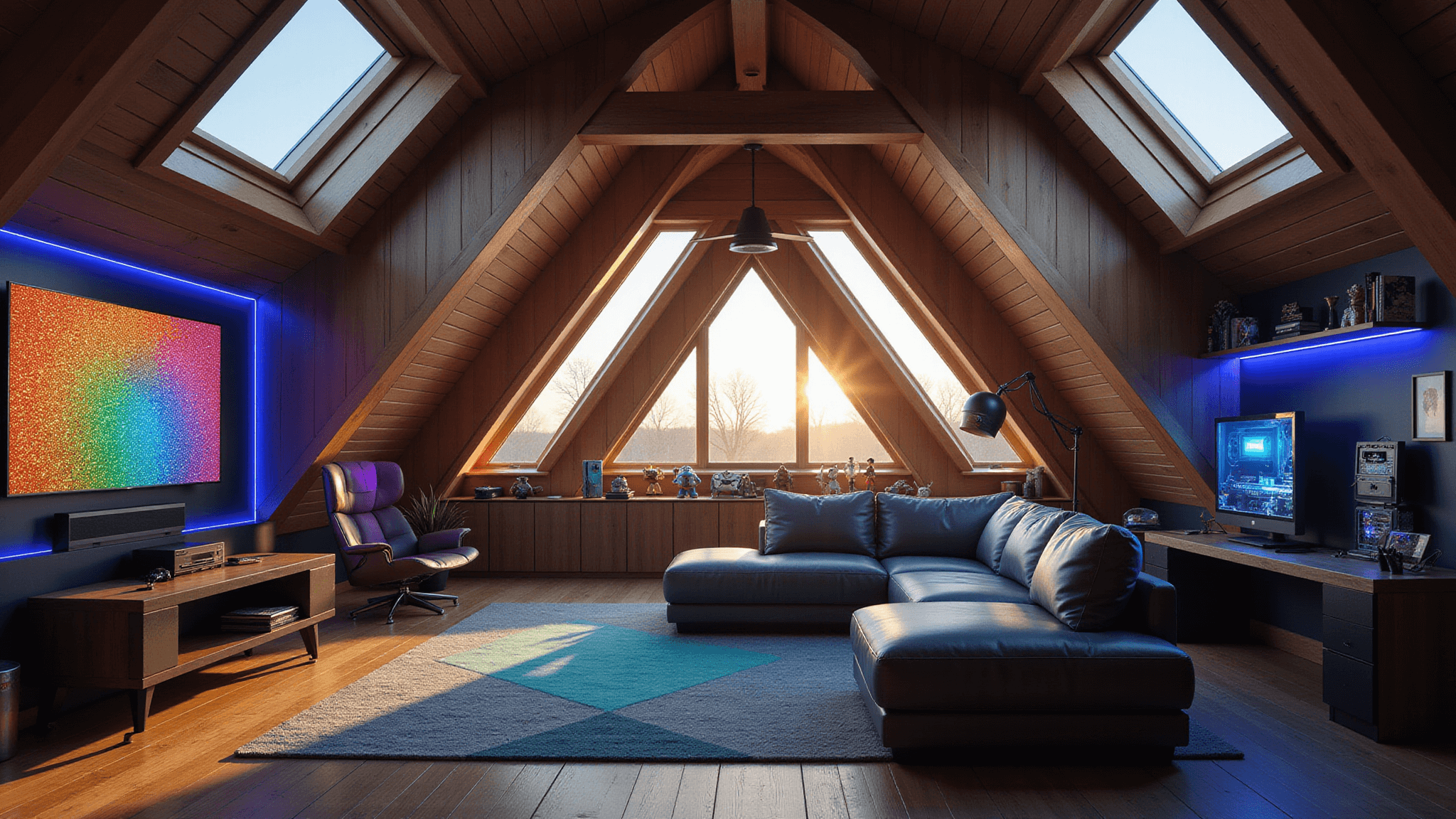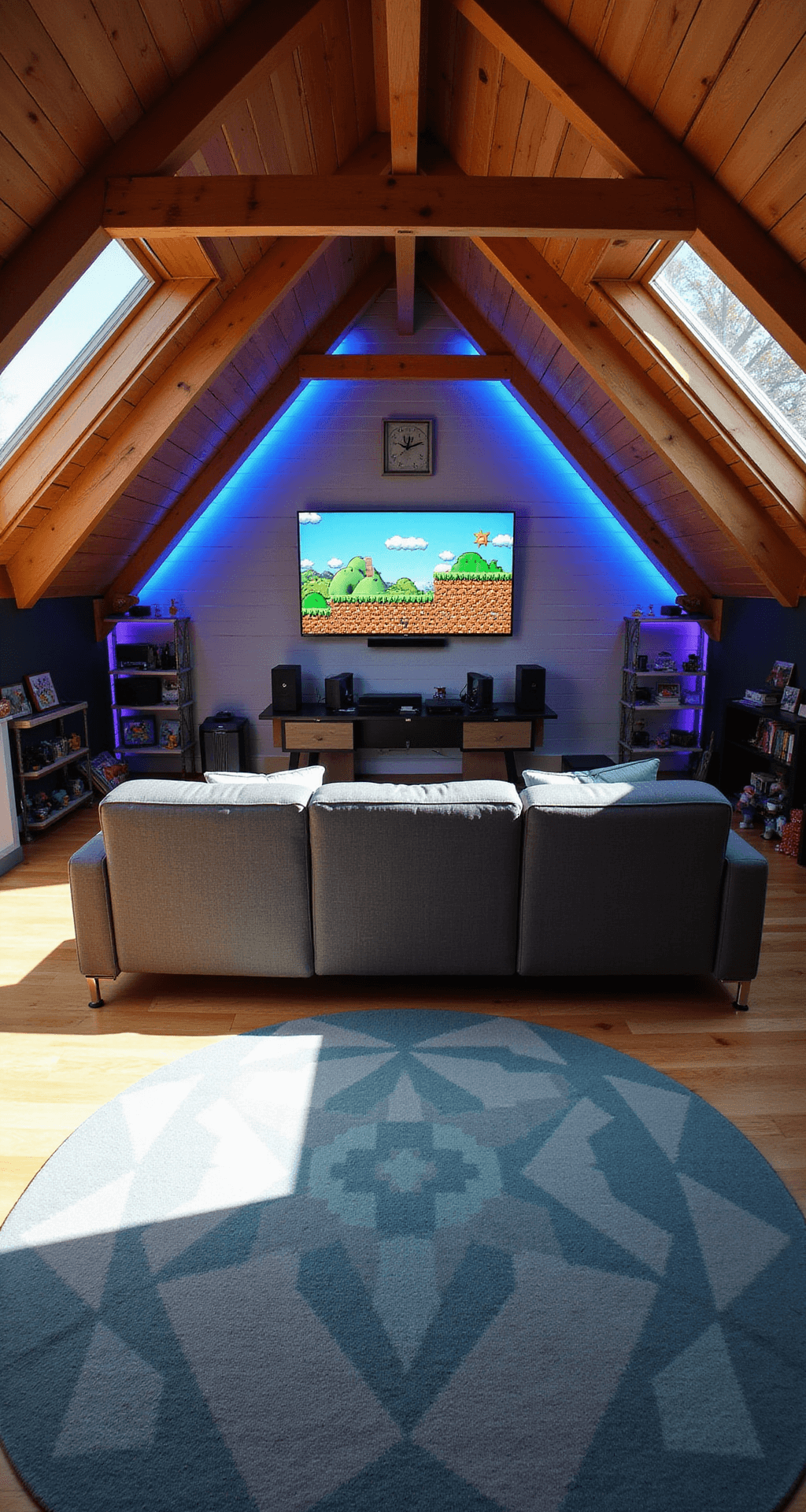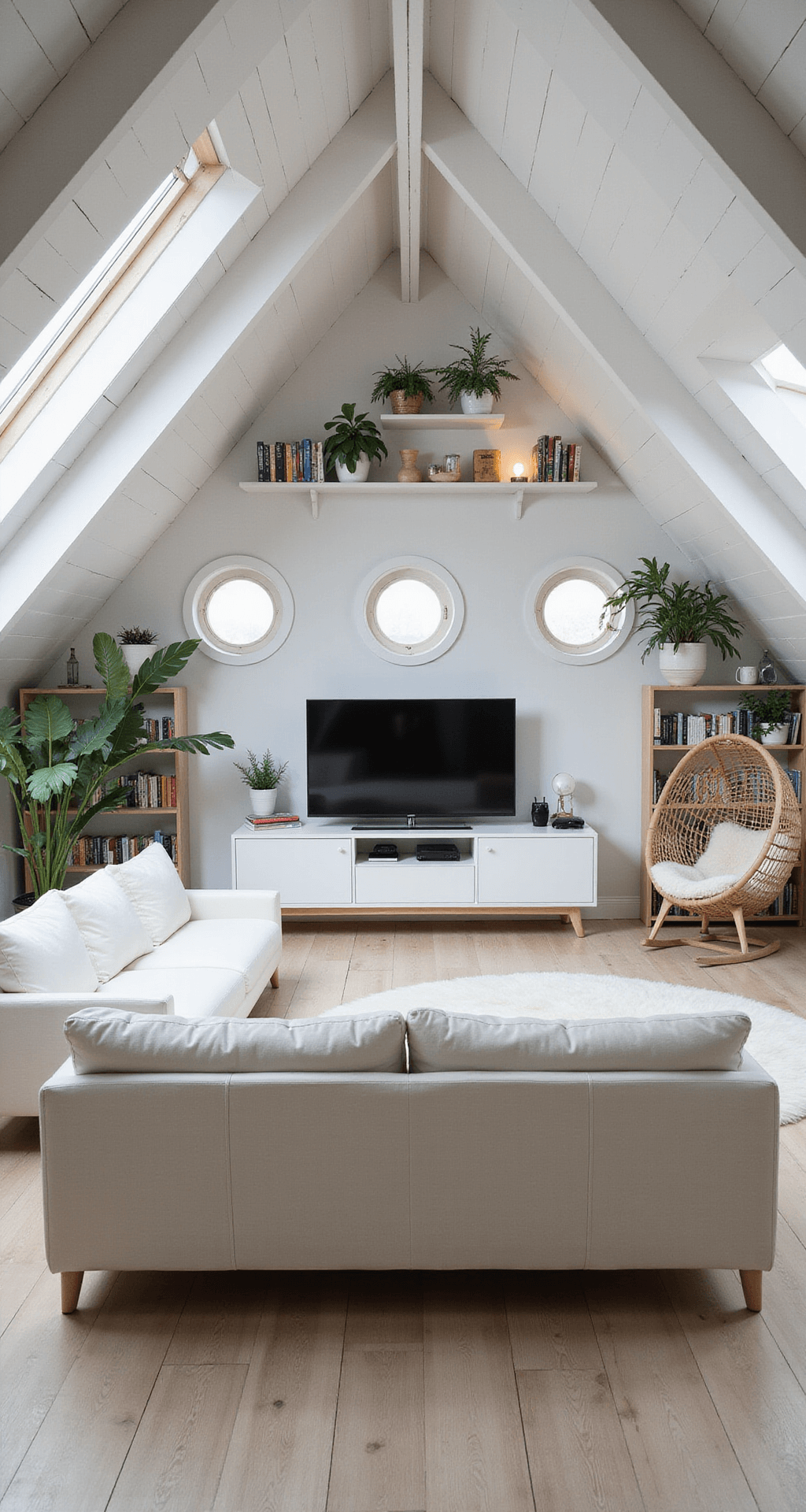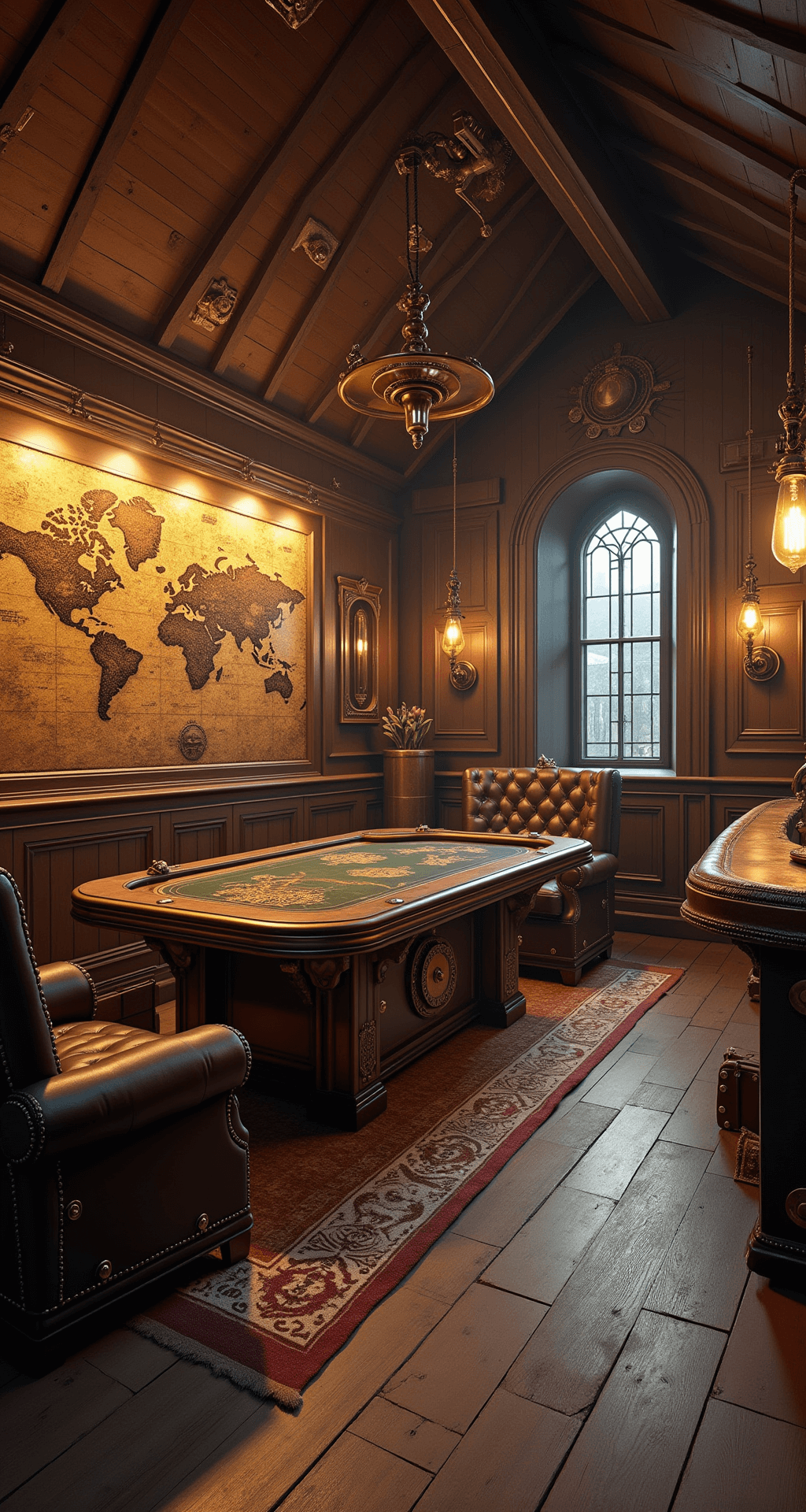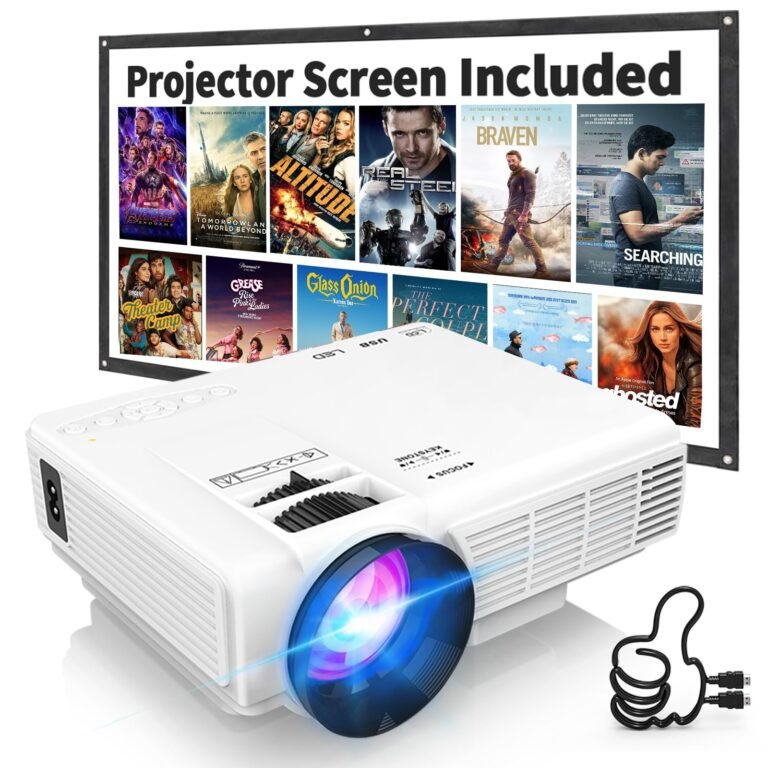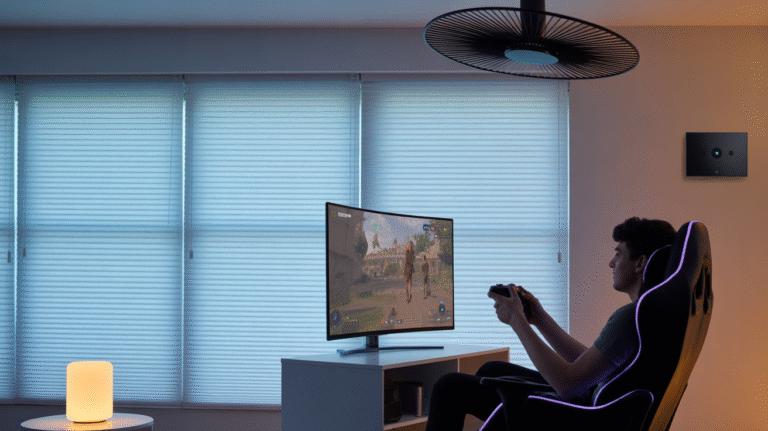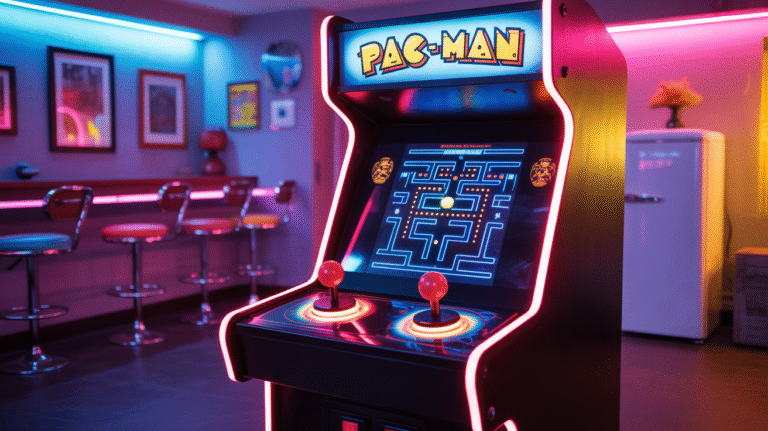This post may contain affiliate links. Please see my disclosure policy for details.
Attic Game Room: Transform Your Forgotten Space into a Gaming Paradise
Contents
I’ve always dreamed of having my own gaming sanctuary, a place where I could escape the world and immerse myself in pixelated adventures. Little did I know that the perfect spot was right above my head – the attic!
Today, I’m going to walk you through how to turn that dusty storage space into the ultimate attic game room. Trust me, by the time we’re done, you’ll be itching to grab a controller and settle in for an epic gaming session.
Let’s Get Started: The Basics of Your Attic Game Room
First things first, let’s talk logistics:
- Time needed: 1-2 days for a basic setup, 3-5 days if you’re going all out with painting and new furniture
- Space size: Most attics range from 150-350 square feet – plenty of room for gaming glory!
- DIY difficulty: Moderate to high (we’re not just throwing a console in the corner, folks)
- Budget: Anywhere from $500 for a DIY approach to $4,000+ for a full-blown renovation
Now, before you start hauling your gaming gear up those rickety stairs, we need to tackle some essential prep work.
Attic Prep: From Dusty to Dreamy
- Clear out the clutter: Say goodbye to those Christmas decorations and moth-eaten sweaters
- Check the structure: Make sure your attic can handle the weight of furniture and excited gamers
- Inspect for leaks: Nothing ruins a gaming session faster than water dripping on your head
- Plan your layout: Consider sloped ceilings and any awkward corners
Choosing Your Style: What’s Your Gaming Vibe?
The beauty of an attic game room is that you can go wild with the design. Some popular styles include:
- Cozy Modern: Think sleek furniture with plush throws and warm lighting
- Retro Arcade: Embrace your inner 80s kid with neon signs and classic game cabinets
- Minimalist: Keep it clean and simple to let your games take center stage
- Industrial: Exposed beams and metal accents for an edgy feel
Pro tip: Stick to 2-3 main colors in your design. Gaming areas are naturally busy, so a simple color scheme will keep things visually calm.
Essential Elements: Building Your Gaming Haven
Now for the fun part – kitting out your space! Here are some must-haves:
Lighting is key:
- Install dimmer switches for mood lighting
- Use LED strip lights to add a cool glow behind your TV or gaming setup
- Don’t forget task lighting for areas where you might be reading game guides or setting up boards
Furniture that fits:
- Comfy seating is a must – think gaming chairs, bean bags, or a cozy sectional
- A sturdy gaming desk for your PC setup
- Storage solutions like floating shelves or built-ins to display your game collection
Tech talk:
- Invest in a quality TV or projector for immersive gameplay
- Consider soundproofing to keep the peace with the rest of the house
- Set up a mini-fridge to keep snacks and drinks close at hand
Decor that pops:
- Create a feature wall with game-themed wallpaper or a mural
- Display your favorite game memorabilia
- Add some greenery with low-maintenance plants to soften the tech-heavy vibe
Budget-Friendly Hacks for Your Attic Game Room
Not everyone has thousands to drop on their gaming paradise. Here are some wallet-friendly ideas:
- Upcycle old furniture: A fresh coat of paint can work wonders
- DIY your decor: Create your own gaming-inspired art
- Thrift store treasure hunt: Find unique pieces to add character to your space
- Use pallets: They’re cheap (sometimes free) and perfect for custom shelving or seating
Maximizing Your Attic Space
Attics can be tricky with their sloped ceilings and odd angles. Here’s how to make the most of it:
- Use the lowest points for storage or cozy reading nooks
- Place your main seating area where the ceiling is highest
- Install skylights or dormer windows to bring in natural light
- Create built-in seating under the eaves to save space
The Final Touch: Atmosphere is Everything
Creating the right ambiance can take your attic game room from good to unforgettable:
- Install smart bulbs to change the lighting color based on your game or mood
- Use area rugs to define different zones (PC gaming, console area, board game table)
- Hang curtains or install blinds to control natural light for optimal screen viewing
- Add a

